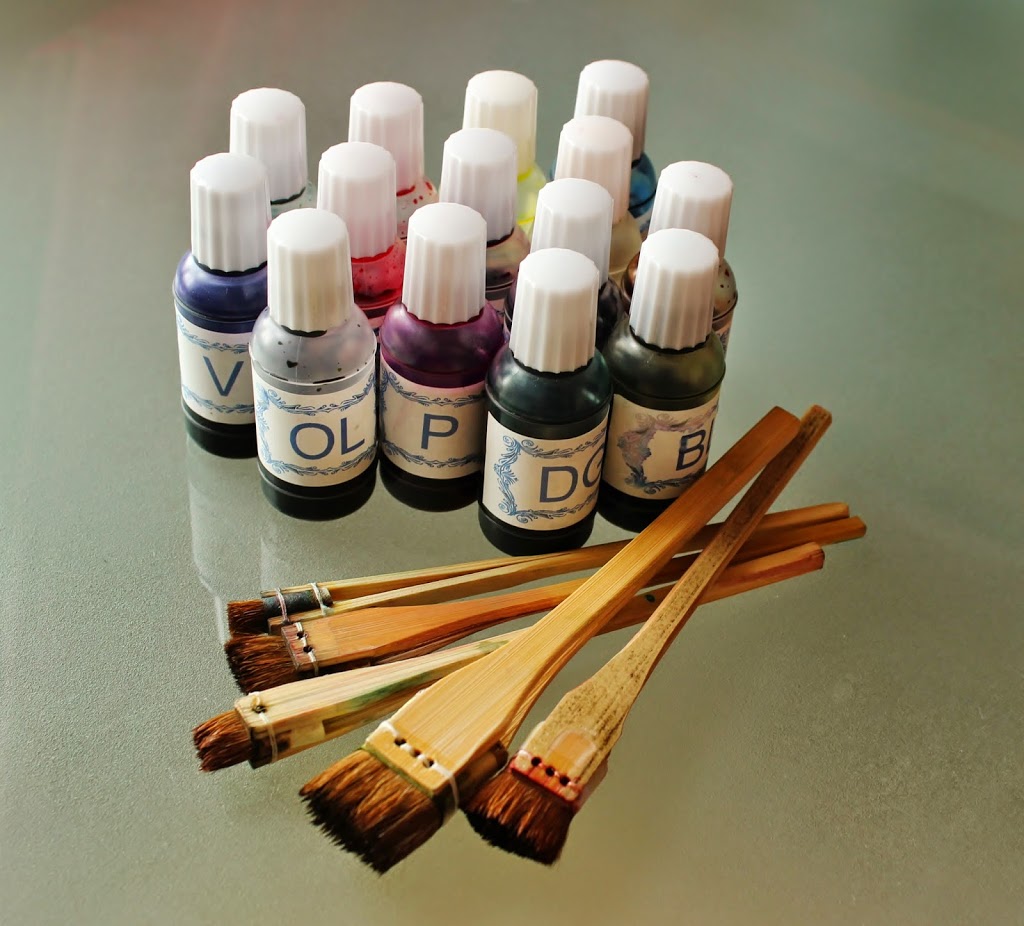 or our purposes. To start with I can say that acrylic fabric dyes are not suitable for a number of reasons. First, they are quite thick, they coat the fabric rather than penetrate it thus changing the texture of it and they also stick to the millinery tools when we shape petals or leaves.
or our purposes. To start with I can say that acrylic fabric dyes are not suitable for a number of reasons. First, they are quite thick, they coat the fabric rather than penetrate it thus changing the texture of it and they also stick to the millinery tools when we shape petals or leaves.The advantage of any aniline dyes is that they are completely intermixable and diluted with water. The disadvantage is there is no white in the palette so the only way to create a tint is to add more water which sometimes does not give the desirable result.
For years I have used (and still do as they last fo-re-ver) local, British made aniline dyes which I’d come across at a craft exhibition in Birmingham, see the photo below:

Another type of dyes I use sometimes comes from Japan. They are liquid and come in little bottles with a pipette on top for measuring drops. They are called drop dyes.
 The drop dyes allow to recreate a complex colour every time you want to do it which is not really possible with powder dyes. All you need to do is to measure a certain about of water into a container and add a certain amount of 1-2-3-4 or how many required dyes into it. The amount of dyes is measured simply with drops. In some Japanese books on silk flower making there are charts which tell you how to mix dyes to get the particular colour for the flowers shown.
The drop dyes allow to recreate a complex colour every time you want to do it which is not really possible with powder dyes. All you need to do is to measure a certain about of water into a container and add a certain amount of 1-2-3-4 or how many required dyes into it. The amount of dyes is measured simply with drops. In some Japanese books on silk flower making there are charts which tell you how to mix dyes to get the particular colour for the flowers shown.
These dyes are the most expensive of all and unfortunately do not last that long, that is finish quite quickly.
Although Japanese artists use little white plastic dishes to prepare colours for dyeing fabrics, I discovered that small portion sized jam jars work pretty well for me. Not only they are big enough, but also if any dye is left you can always cover the jar with a lid and save the precious dye from evaporating!
And lastly,  as with any chemicals, one has to take precautions using aniline dyes. Please do not swallow or inhale the dry particles when working with them. Common sense above all!
as with any chemicals, one has to take precautions using aniline dyes. Please do not swallow or inhale the dry particles when working with them. Common sense above all!
Explore these tutorials to learn more about colouring fabrics for making fabric flowers

<<<<<<<< SILK DANDELION CLOCK TUTORIAL
SILK WILD ROSE TUTORIAL >>>>>>>>>>












Leave a Reply